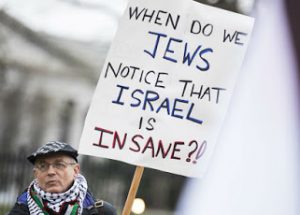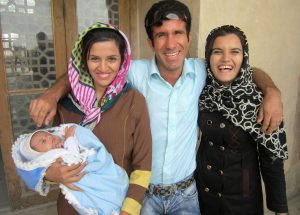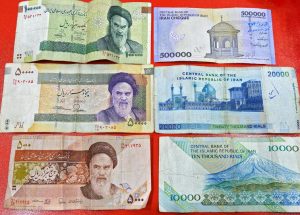Time to Reach a Settlement with a Functional and Restrained Entity in the Gaza Strip
The idea of the “March of Return,” which was initiated by civil organizations in the Gaza Strip seeking once more to direct the attention of the international community to the suffering of the local population by means of mass demonstrations along the border, was hijacked by Hamas. Hamas pushed aside the organizers of the project and in effect took over the production and direction of the events. For its part, Israel is capable of accommodating a hostile entity living beside it, as long as this entity is restrained, deterred, and functional. This aim can only be achieved after Israel recognizes the need to develop separate strategies vis-à-vis the Gaza Strip and the West Bank, exhaust every possibility of taking advantage of Hamas’s current weakness, and leverage Hamas’s willingness for a long term hudna. The proposed strategy is also based on the understanding that the Palestinian Authority will not resume its rule in the Gaza Strip in the foreseeable future, and that effort must be invested to consolidate the PA’s governance in the West Bank and improve the living conditions, freedom of movement, and economy in that area, while also securing the conditions for the future achievement of two nation states.
Since late March 2018, a campaign along the border of the Gaza Strip has been underway, based on a rationale shaped by Hamas, which took control of a civilian initiative that provided the organization with an escape route from its current strategic hardship. The idea of the “March of Return,” which was initiated by civil organizations in the Gaza Strip seeking to refocus the attention of the international community on the suffering of the local population by means of mass demonstrations along the border, was hijacked by Hamas. Hamas pushed aside the organizers of the project and in effect took over the production and direction of the events.
Hamas’s difficulties stem from four main reasons:
a. The failed reconciliation process with Fatah, which resumed after Hamas announced its failure to administer the civil realm in the Gaza Strip and expressed its willingness to transfer relevant powers to the Palestinian Authority;
b. The severe humanitarian plight in the Gaza Strip and the mounting frustration of the local population;
c. The significant erosion of the value of its strategic military assets, given the defensive and neutralizing elements that have been developed by the IDF;
d. Hamas’s essential lack of desire and readiness to enter into another large scale military clash with the IDF.
Thus, the campaign along the border fence serves a number of Hamas’s strategic goals, most importantly by diverting the mounting frustration among the local population toward Israel and demonstrating the organization’s commitment to the struggle against Israel, which necessarily comes at the expense of the status of the Palestinian Authority. At the same time, it serves to refocus international attention on the Gaza Strip, strengthen the narrative of Palestinian victimhood, exhaust the IDF forces along the border over a long period of time, and delegitimize Israel.
The failure of the reconciliation process between Fatah and Hamas underscores that only an extremely slim chance exists that the Palestinian Authority will regain control of civil administration in the Gaza Strip. In reality, there are two separate Palestinian entities, each of which is hostile to the other and both of which struggle against Israel: Hamas, which leads the armed struggle and, in the current campaign, the local popular struggle as well; and the Palestinian Authority, which leads the popular struggle and the political struggle in the international arena. However, security and economic coordination and cooperation exists between Israel and the Palestinian entity in the West Bank, and some local civilians are even permitted to work in Israel and in the industrial areas of the Israeli settlements in the West Bank. The inhabitants of this region enjoy a significantly higher standard of living than the residents of the Gaza Strip, as well as more extensive freedom of movement.
The current campaign along the border with the Gaza Strip reminds us that under the present circumstances – most prominently the split in the Palestinian arena and the severe humanitarian and infrastructure conditions in the region – the Gaza Strip will continue to constitute a strategic challenge for Israel even when the current phase within it comes to a close. However, Israel’s position and policy regarding Hamas and the Gaza Strip perpetuate this situation and therefore also fuel the underlying conditions for security escalation.
Based on the assumption that Hamas will remain the sovereign power in the Gaza Strip and that Israel does not intend to take action to remove it from power and replace it with other leadership or govern the Gaza Strip on its own, Israel needs to examine the possibility of coming to terms with this hostile entity on its border and formulating a strategy to regulate its relations with it, including by means of security understandings and even a limited degree of security coordination. This presumably would create a chance for ongoing quiet along and around the border.
Israel, with the assistance of Egypt and the involvement of the international community, can develop mechanisms of regulation and interaction vis-à-vis Hamas, even without mutual recognition and without direct contact. These mechanisms could serve to facilitate a more effective response, in comparison to what exists today, to the humanitarian hardships that currently prevail inside the Strip; to restrain Hamas from attempts to strike at Israel; and to improve its civil governance in the Gaza Strip. After all, there is not necessarily a contradiction between the Gaza Strip being a hostile entity and the ability to develop mechanisms of regulation and interaction.
Such a course of action would be conditional upon undermining the equation that was established between Israel and Hamas since its security closure of the Gaza Strip in June 2007, whereby the Palestinian Authority is the only official party with which Israel will engage in dialogue. Israel must come to terms with the existence of both distinct Palestinian entities and strive to establish a reality based on an arrangement that will be less than a final status settlement, with conceptual and operative separation between the policy toward the Palestinian Authority in the West Bank and the separate policy to be developed and sharpened vis-à-vis the Gaza Strip. The proposed strategy, then, calls for striving to reach an arrangement with Hamas, which will necessarily strengthen it and could serve to weaken the status of the Palestinian Authority. This arrangement would promote a long term hudna with Hamas.
In recent months, Hamas spokespeople have conveyed messages indicating a willingness on their part to reach a long term hudna with Israel. This was not the first time that such sentiments have been voiced. However, the idea never took shape due to conditions advanced by Hamas for its implementation, as well as Israel’s unwillingness to consider a possibility in this direction, which would necessarily mean recognition and legitimization (albeit indirect) of Hamas and its control over the Gaza Strip. This time, as well, a process leading to an agreement over a hudna between Israel and Hamas, whether declared or implied, will be complicated. However, in light of Hamas’s hardships and the hopelessness of the Gaza population (which in itself constitutes a threat to Hamas’s rule and the danger of a chaotic reality as a result of its undermining or fall), its fundamental willingness for a hudna (which is also encountering opposition within Hamas’s ranks and leadership) can be viewed as a basis for a greater feasibility of actualizing the idea.
To advance the idea, Israel will need to qualify the reservations of the international community in general, and the European Union in particular, regarding its intentions regarding Hamas and regarding the Palestinian Authority. However, the Palestinian Authority now is neither present nor governing in the Gaza Strip in any event, and there is currently no concrete chance of a change in this situation. Therefore, adhering to the condition that all contributions to the Gaza Strip be made through the Palestinian Authority and that the PA be returned to power in the Strip actually helps perpetuate the problematic reality in the Strip and, at the same time – in part because the political process is currently at a dead end – does not serve to strengthen the Palestinian Authority.
The first stage of a process of regulating interactions with Hamas in the Gaza Strip will require the work of a mechanism led by representatives of the involved parties and Hamas that is charged with supervising the use, and preventing the abuse, of donated funds. The possibility of using this mechanism to transfer a relative portion of the tax revenues collected by Israel for goods and services into the Gaza Strip should be considered. Next, and subject to Hamas’s fulfillment of the terms of the agreement, the possibility of expanding its powers regarding the management of the donated funds should also be considered. Israel will also need to recruit Egypt as a major partner in the process vis-à-vis Hamas. Egypt’s contribution will need to take the form of the regular operation of the Rafah border crossing, securing Hamas’s commitment to the process, and restraining the organization. At the same time, it will be necessary to create the conditions for channeling the relief funds to the rebuilding of essential infrastructure and economic incentives, including through the establishment of industrial areas on the border of the Strip. Such areas will provide a location for advancing and implementing joint industrial initiatives that will provide employment. Israel will be able to help create conditions for the normalization of the local population if it considers adopting an approach that is more flexible regarding the import and export of goods to and from the Strip and increasing the number of entry permits for commercial traders, workers, and those in need of medical treatment.
Israel already has experience building mechanisms aimed at regulating relations with Hamas (the principles of the security perimeter that were formulated through Egyptian mediation following Operation Pillar of Defense), and doing so would therefore not be setting a precedent. Nonetheless, this time, Israel could begin reshaping its policy regarding the Gaza Strip with the aim of leveraging Hamas’s current weakness and the willingness for a hudna that is taking shape among influential elements within Hamas’s leadership, led by the organization’s leader in the Gaza Strip, Yahya Sinwar. Although Hamas is not expected to dismantle its military wing even within the framework of a hudna, there is reason to believe that it will be possible to reach agreements regarding the cessation of its military buildup and its efforts to develop offensive means against Israel in the underground, maritime, and air realms.
In parallel, and in order to reduce the effect of the new policy toward Hamas on the status of the Palestinian Authority, Israel will need to present a policy for conduct vis-à-vis the Palestinian Authority itself. In this realm, Israeli policy will need to be based on three primary foundations: a) preservation of Israel’s ability to engage in security activity in the West Bank; b) striving to improve the economic and infrastructure reality in the West Bank, including the creation of transportation contiguity and authorization for the construction of Palestinian infrastructure in the parts of Area C that are adjacent to Area A; and c) a commitment to refrain from expanding settlements outside the settlement blocs.
Israel is capable of accommodating a hostile entity living beside it, as long as this entity is restrained, deterred, and functional. This aim can only be achieved after Israel recognizes the need to develop separate strategies vis-à-vis the Gaza Strip and the West Bank, exhaust every possibility of taking advantage of Hamas’s current weakness, and leverage Hamas’s willingness for a long term hudna. The proposed strategy is also based on the understanding that the Palestinian Authority will not resume its rule in the Gaza Strip in the foreseeable future, and that effort must be invested to consolidate the PA’s governance and rule in the West Bank and improve the living conditions, freedom of movement, and economy there, while also securing the conditions for the future achievement of two nation states.



